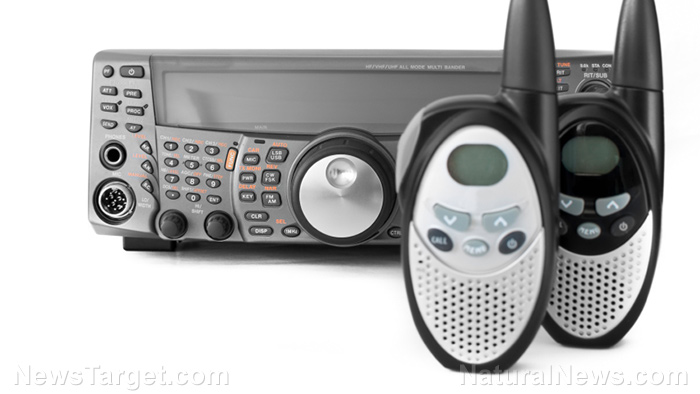Prepper must-haves: 11 Items for your Ziploc bag survival kit
08/09/2021 / By Zoey Sky

A resealable plastic bag like a Ziploc bag may be the last thing that comes to mind when you’re thinking of a suitable container for a survival kit, but this item is a versatile piece of gear.
For example, a Ziploc bag can be used as a water container or a bait trap. Even if you already have a survival kit in your bag, prep a Ziploc bag pocket survival kit so you can have a handy backup in case you lose your gear when disaster strikes. (h/t to SurvivalCache.com)
Why use a resealable plastic bag for your survival kit?
Using a Ziploc bag for your gear might sound ridiculous, especially since there are other sturdier and roomier bags to use, but there are several reasons you should reconsider.
Here are some of the many survival uses of a Ziploc bag:
Bait trap
When SHTF, you can use a Ziploc bag as a bait trap while fishing. Use a plastic bag as a small dip net for catching minnows and other critters which you can then use a bait to catch bigger fish.
Firestarter
This use requires a bit of patience, but you can turn a Ziploc bag into a makeshift firestarter.
First, fill a clear plastic bag with water without sealing it. Hold it by one top corner, then slowly twist the bag to force the air out.
As the air leaves the bag, it will bulge and form a sphere. Use the sphere to focus sunlight onto a pile of tinder and wait until you have a fire. Practice using a Ziploc bag to start a fire so you can do it more easily when SHTF.
A container for assorted items
When SHTF, waterproof containers will be very valuable. Use a resealable plastic bag to keep fire tinder dry, collect food, gather bait, or as storage for other items you need to keep clean and dry.
Makeshift glove
Using a Ziploc bag as a glove may ruin it for future use, but you can temporarily use it as a barrier for your hand when dealing with unsanitary items in a post-SHTF world.
Water collection container
When SHTF, having a way to collect and transport water may just save your life. With a gallon-sized plastic bag, you can easily transport over a gallon of water.

Prepping a Ziploc bag survival kit
A gallon-sized Ziploc bag may seem big, but you need to choose carefully since it’s not going to offer a lot of space if you plan on bringing many items. Avoid packing any sharp or pointy objects that may puncture the plastic bag. If you’re adding something sharp like a pocketknife, wrap or place it in a smaller container within the bag to prevent them from poking a hole in the container. (Related: Bug out survival planning: Prepping a bug-out bag in less than an hour.)
Below are useful items that you can include in a one-gallon Ziploc survival kit.
Butane lighter
A lighter is the easiest way to get a fire going make sure you always have one in your kit. Alternatively, you can bring a small container of waterproof matches.
Cordage
Cordage is a useful item with many survival uses. If you pack a one-hundred-foot hank of paracord, you will have around 800 feet of usable cordage once it is unraveled.
Cotton bandana
Bring a brightly colored bandana so you can use it as a signaling device if you need rescuing.
A bandana can also be used as:
- A bandage
- A dishcloth or dishrag
- A facemask
- An ice pack
- A makeshift bag
- A neck gaiter
- A splint
- A sweatband
- A tourniquet
- A washcloth
Duct tape
Duct tape is another must-have in your survival kit.
When SHTF, duct tape can be used to:
- Add extra insulation to your boots
- Hold a tent closed
- Make a rope
- Mark a trail
- Repair gear
- Reseal packages of food
- Signal for rescue (use brightly colored duct tape)
- Splint a broken tent pole or fishing rod
- Start a fire
Extra Ziploc bags
Since empty Ziploc bags are light and affordable, you can add a couple of extra bags in your survival kit.
Ferrocerium rod (ferro rod)
A ferro rod is another effective firestarter for your survival kit. A ferro rod scraper has sharp edges and you need to wrap it in a piece of cloth or place a layer of tape around it so it doesn’t poke a hole in the plastic bag.
First-aid supplies
Prep a basic first aid kit in a small tin can to keep things organized in your plastic bag survival kit. Include items like bandages, gauze and assorted prepackaged medications and ointments.
Self-contained mini fishing kit
You’ll need a fishing kit if you’re traveling outdoors. This ensures that if SHTF, you can find food and keep up your energy.
Fishing kits are ideal for a survival kit because all you need is a fishing line and hooks. These two items don’t take up a lot of space. Keep your mini fishing kit in a separate container, like a small tin can, so the hooks don’t puncture the bag.
Small pocketknife or multitool
A small pocketknife or multitool can be used for self-defense, setting up camp, or prepping food. Save space by bringing a small multitool.
Small survival guide
Even an experienced prepper can use a survival guide when SHTF. Use your mini-guide for reference and for making a rescue plan if you get separated from the rest of your group.
Water purification tablets or a mini water filter
If you’re stuck somewhere without clean drinking water, use the water purification tablets or a mini water filter. You need to drink water to prevent dehydration when SHTF.
Pros and cons of using a Ziploc bag
Like other survival items, a Ziploc bag has pros and cons. On one hand, a resealable plastic bag is compact, light and cheap.
The bag itself has several survival uses and you can customize your kit by using a bag of your preferred size. A plastic bag is see-through so you can easily see the contents of the kit without having to rummage in it.
On the other hand, a Ziploc bag can be punctured with sharp items. It’s not a discreet container when carried by itself and it may be inconvenient to carry if you need both hands for tasks when SHTF.
A Ziploc bag survival kit is useful by itself, but this kind of kit works best when stored among your survival gear or in a bug-out vehicle.
Sources include:
Tagged Under: disaster, DIY, Gear, how-to, off grid, pocket survival kit, preparedness, prepper, prepping, self-reliance, SHTF, survival, survival gear, survival kit, Survival Tips, survival tools, Ziploc, Ziploc bag survival kit
RECENT NEWS & ARTICLES
COPYRIGHT © 2017 GEAR.NEWS
All content posted on this site is protected under Free Speech. Gear.news is not responsible for content written by contributing authors. The information on this site is provided for educational and entertainment purposes only. It is not intended as a substitute for professional advice of any kind. Gear.news assumes no responsibility for the use or misuse of this material. All trademarks, registered trademarks and service marks mentioned on this site are the property of their respective owners.




















